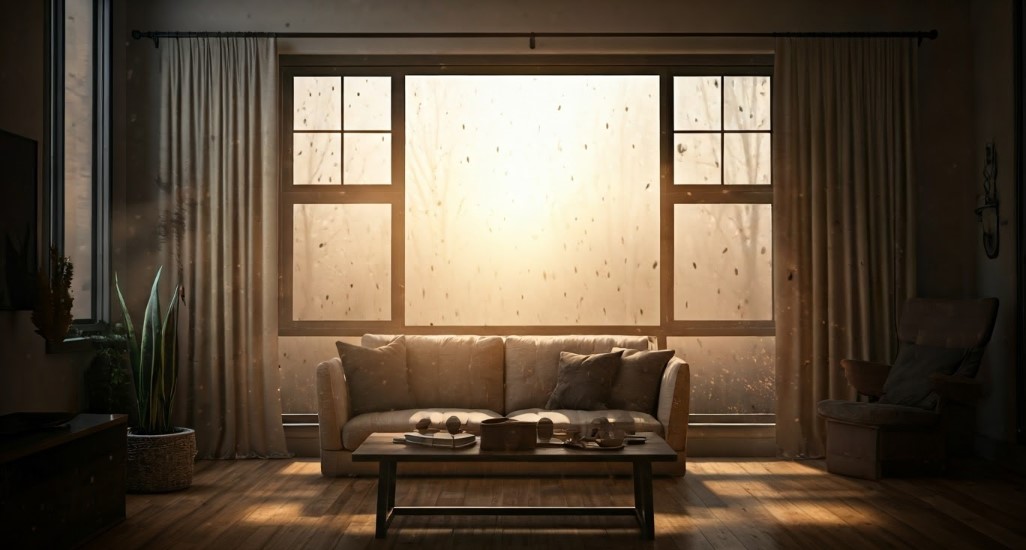While it is easy to see the immediate danger of a wildfire, people often overlook how wildfire smoke and ash affect the air inside our homes. Wildfire smoke is full of harmful pollutants. It can travel for miles, entering our homes and affecting the air we breathe. This guide looks at how wildfire ash impacts indoor air quality. It also provides helpful steps to keep your home and loved ones safe.
The Composition of Wildfire Ash and Its Health Implications
Wildfire ash is made up of a mix of organic and inorganic materials. The exact makeup changes depending on what burned. One major part of wildfire ash is particulate matter. This includes tiny particles, like PM2.5, which can be very harmful to health.
These tiny particles can irritate your eyes, nose, and throat. They may also cause problems with breathing, like coughing, wheezing, and feeling short of breath. For people who already have heart or lung conditions, being around wildfire ash can make their symptoms worse and lead to serious health issues.
In addition, wildfire ash can have heavy metals and other harmful substances. This can pose long-term health risks if inhaled or swallowed. To handle the dangers of wildfire ash, we need to understand what it is made of and the health risks it brings.
How Ash and Smoke from Wildfires Degrade Air Quality Indoors
Even a home that looks well-sealed can still let in ash and smoke from wildfires. Open windows, doors, and vents can let harmful particles inside.
Cracks and gaps in walls, windows, and foundations make things worse. They let smoke and tiny particles get in easily.
This hidden problem harms indoor air quality and can be a danger to our health. It is important to take action quickly to protect our homes during wildfires.
Immediate Steps to Protect Indoor Air Quality During a Wildfire
Protecting your indoor air quality during a wildfire needs several steps. By following these actions, you can make your indoor space safer for your family. This will help reduce the health risks that come with wildfire smoke exposure.
Sealing Your Home from Outdoor Air and Ash Infiltration
Creating a barrier against smoke and ash is the first step to keeping the indoor air healthy during a wildfire.
Here are some easy ways to seal your home:
- Seal windows and doors: Use weather stripping and caulk to close any gaps around windows and doors. This stops smoke from getting inside.
- Close fireplace dampers: Make sure your fireplace dampers are tightly closed. This keeps smoke from entering through the chimney.
- Shut off outdoor air vents: If you have a ventilation system that brings in outdoor air, close the vents or set it to recirculate.
These simple actions greatly help to reduce the smoke and ash coming in, which protects your indoor air quality.
The Role of Air Purifiers and HVAC Filters in Capturing Fine Particulate Matter
Air purifiers equipped with HEPA filters are highly effective in removing wildfire smoke and fine particulate matter from the air. These filters capture particles as small as 0.3 microns with exceptional efficiency, significantly improving indoor air quality.
|
Filter Type |
Particle Removal Efficiency |
|
HEPA Filter |
Up to 99.97% of particles 0.3 microns and larger |
|
Activated Carbon Filter |
Effective in removing odors and gases |
Consider the size of your room and the Clean Air Delivery Rate (CADR) of the air purifier to ensure optimal performance. Placing air purifiers strategically in frequently used areas can further enhance their effectiveness.
Meanwhile, HVAC systems with high-efficiency filters also play a crucial role. Upgrading to MERV 13 or higher rated filters helps trap fine particles effectively. However, it’s crucial to check and replace HVAC and air purifier filters regularly, especially during periods of heavy smoke, for optimal performance.
Professional Cleaning Services by Fresh Flare: A Deep Dive into How We Can Help
During a wildfire, taking quick action is very important. But what happens afterward also needs focus. This is when expert cleaning services are necessary. Fresh Flare offers complete solutions to handle the specific problems that come from wildfire ash in your home. Our skilled team uses top techniques to make sure your home is cleaned well. We aim to restore it to a safe and healthy living space.
Air Duct Cleaning to Remove Ash and Soot Accumulation
Wildfire ash can get into your HVAC system. It builds up in the ducts and can pollute the air in your home. This buildup can harm your health and can make your HVAC system work less efficiently. As a result, you could face higher energy bills.
Fresh Flare provides expert air duct cleaning services. We effectively remove ash and soot buildup. This helps restore your HVAC system’s performance and improve your indoor air quality. We use special tools and HEPA-filtered vacuums to carefully and completely remove contaminants.
Odor Removal Techniques for Eliminating Persistent Smoky Smells
The strong smell of wildfire smoke can stay in your home long after the fire is out. This can change how your indoor space feels.
Fresh Flare uses special techniques to remove these stubborn smoky odors. We do more than just cover up the smell. We go after the source to create a fresh and smell-free home. Our safe and effective deodorizers work to break down odor molecules. This way, your house can smell clean and fresh again.
Long-Term Strategies to Maintain Healthy Indoor Air Post-Wildfire
To keep indoor air healthy after a wildfire, you need to take steps that offer lasting safety. This means buying good air filtration systems. These systems help stop pollutants from coming in.
It’s also important to regularly care for your HVAC systems. This helps them work well and stops future contamination from leftover ash and debris.
Investing in High-Efficiency Particulate Air (HEPA) Filters
Investing in HEPA filters is very important for dealing with indoor air quality problems caused by wildfire ash. These filters capture small particles, including the dangerous matter in wildfire smoke. This helps improve air quality and lowers health risks related to indoor air pollution. When you choose HEPA filters, you can fight the negative effects of wildfire ash in your home. This will help keep your indoor space safe and provide cleaner, healthier air for you and your family.
Regular Maintenance Schedules for HVAC Systems to Prevent Future Contamination
Regularly taking care of your HVAC systems is important to stop future problems with wildfire ash and other dirt. Book professional checks and cleanings at least once a year. This helps your system run well.
During these checks, technicians look for ash buildup. They clean or replace filters and check the ventilation. This smart choice helps keep dirty air from coming back and gives you and your family a clean indoor space.
Conclusion
In conclusion, it is very important to understand how wildfire ash impacts indoor air quality. This knowledge helps keep your home healthy. You can take quick steps to protect yourself from harmful ash and smoke during a wildfire. First, seal your home and use air purifiers. For long-term care of your air quality, think about getting HEPA filters and keeping your HVAC system in good shape. Also, Fresh Flare offers cleaning services to help you deal with the effects of wildfires in a good way. Stay informed and take action to make sure your indoor air quality is good for a healthier home.
If you want to know more, check out our blog on Your Guide to Post-Wildfire Cleanup.
Frequently Asked Questions
Can indoor plants help improve air quality after a wildfire?
Some indoor plants can clean the air, but they do not remove the tiny particles in wildfire smoke. Just depending on plants to make air quality better after a wildfire is not enough.
How often should I change my air filters during and after wildfire exposure?
During a wildfire, you should check your air filters every few weeks. If they look dirty or blocked, replace them. After the wildfire, keep checking and changing the filters if needed. Pay attention if your HVAC system isn’t working well or if you smell smoke.
What are the signs that my indoor air is contaminated with wildfire ash?
Several signs show that the ash from wildfires may be in your indoor air. These include a lasting smoky smell, an evident layer of ash on surfaces, more allergy or asthma problems, trouble breathing, eye irritation, or a cough that won’t go away. If you notice these signs, it is important to act quickly and clean your indoor air.





